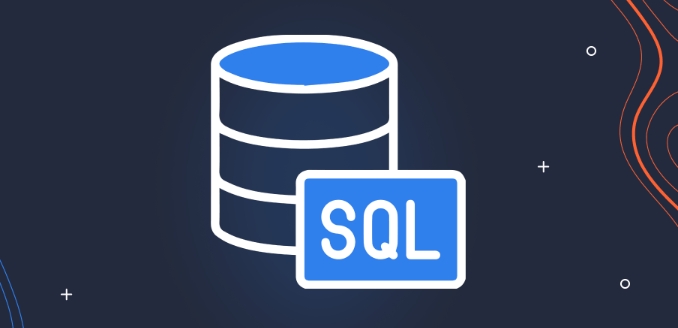Isolation Levels in SQL Server: Read Committed, Snapshot, Serializable
Jul 21, 2025 am 12:35 AMThe three main SQL Server isolation levels — Read Committed, Snapshot, and Serializable — differ in concurrency and consistency. 1. Read Committed prevents dirty reads but allows non-repeatable and phantom reads, offers balanced performance, and can use RCSI to reduce blocking. 2. Snapshot uses row versioning to allow non-blocking reads and provides consistent data views, but increases tempdb overhead. 3. Serializable prevents all read phenomena through range locks, ensuring maximum consistency at the cost of higher blocking, making it ideal for critical operations requiring data integrity. Choosing the right level depends on workload needs: RCSI for OLTP, Snapshot for high concurrency, and Serializable for strict consistency scenarios.

When working with SQL Server, understanding isolation levels is key to managing how transactions interact with each other and how data consistency is maintained. Among the commonly used ones are Read Committed, Snapshot, and Serializable — each has its own behavior and trade-offs in terms of concurrency and consistency.

Read Committed: The Default Level That Balances Safety and Performance
This is the default isolation level in SQL Server, and it’s widely used because it strikes a decent balance between performance and data integrity.
Under Read Committed:

- A transaction cannot read uncommitted changes from other transactions (no dirty reads).
- However, it may experience non-repeatable reads and phantom reads, depending on whether locks are held long enough or if the database uses row versioning.
- In the standard configuration, shared locks are held only while reading data, then released — which means another transaction can modify that data right after.
If you're using this level and want to avoid blocking, you might enable Read Committed Snapshot Isolation (RCSI). This allows readers not to block writers and vice versa by using versioned rows in tempdb instead of locking.
Snapshot: Versioning for Better Concurrency
Snapshot isolation is all about avoiding blocking without compromising consistency. It uses row versioning stored in tempdb to give each transaction a consistent view of the database as of when the transaction started.

Key points:
- Readers don’t block writers, and writers don’t block readers.
- Each transaction sees a snapshot of the data as it existed at the start of the transaction.
- You need to explicitly set this level using
SET TRANSACTION ISOLATION LEVEL SNAPSHOTand make sure the database allows it (ALLOW_SNAPSHOT_ISOLATION ON).
One thing to be aware of is the potential overhead on tempdb. If your system has heavy update activity, tempdb usage can spike because every change generates a new version of the row.
Serializable: Maximum Consistency, Minimum Concurrency
Serializable is the strictest isolation level. It prevents:
- Dirty reads
- Non-repeatable reads
- Phantom reads
How does it do that?
- It places range locks on the data being queried, preventing other transactions from inserting or updating data in that range during the transaction.
- While this ensures full consistency, it also leads to more blocking and reduced concurrency.
This level is best suited for situations where data integrity absolutely must be preserved, even at the cost of performance. For example, financial systems doing end-of-day reconciliations often use this level to ensure no overlapping updates slip through.
In practice:
- Use Read Committed (especially with RCSI) for most OLTP workloads.
- Go for Snapshot when you need high concurrency and can handle the tempdb overhead.
- Reserve Serializable for critical operations where absolute data consistency is non-negotiable.
Each isolation level serves a purpose, and choosing the right one depends on your application’s needs.
The above is the detailed content of Isolation Levels in SQL Server: Read Committed, Snapshot, Serializable. For more information, please follow other related articles on the PHP Chinese website!

Hot AI Tools

Undress AI Tool
Undress images for free

Undresser.AI Undress
AI-powered app for creating realistic nude photos

AI Clothes Remover
Online AI tool for removing clothes from photos.

Clothoff.io
AI clothes remover

Video Face Swap
Swap faces in any video effortlessly with our completely free AI face swap tool!

Hot Article

Hot Tools

Notepad++7.3.1
Easy-to-use and free code editor

SublimeText3 Chinese version
Chinese version, very easy to use

Zend Studio 13.0.1
Powerful PHP integrated development environment

Dreamweaver CS6
Visual web development tools

SublimeText3 Mac version
God-level code editing software (SublimeText3)
 How to find columns with a specific name in a SQL database?
Jul 07, 2025 am 02:08 AM
How to find columns with a specific name in a SQL database?
Jul 07, 2025 am 02:08 AM
To find columns with specific names in SQL databases, it can be achieved through system information schema or the database comes with its own metadata table. 1. Use INFORMATION_SCHEMA.COLUMNS query is suitable for most SQL databases, such as MySQL, PostgreSQL and SQLServer, and matches through SELECTTABLE_NAME, COLUMN_NAME and combined with WHERECOLUMN_NAMELIKE or =; 2. Specific databases can query system tables or views, such as SQLServer uses sys.columns to combine sys.tables for JOIN query, PostgreSQL can be used through inf
 What is the difference between SQL and NoSQL
Jul 08, 2025 am 01:52 AM
What is the difference between SQL and NoSQL
Jul 08, 2025 am 01:52 AM
The core difference between SQL and NoSQL databases is data structure, scaling method and consistency model. 1. In terms of data structure, SQL uses predefined patterns to store structured data, while NoSQL supports flexible formats such as documents, key values, column families and graphs to process unstructured data; 2. In terms of scalability, SQL usually relies on stronger hardware on vertical expansion, while NoSQL realizes distributed expansion through horizontal expansion; 3. In terms of consistency, SQL follows ACID to ensure strong consistency and is suitable for financial systems, while NoSQL mostly uses BASE models to emphasize availability and final consistency; 4. In terms of query language, SQL provides standardized and powerful query capabilities, while NoSQL query languages ??are diverse but not as mature and unified as SQL.
 Advantages of Using Common Table Expressions (CTEs) in SQL.
Jul 07, 2025 am 01:46 AM
Advantages of Using Common Table Expressions (CTEs) in SQL.
Jul 07, 2025 am 01:46 AM
The main advantages of CTEs in SQL queries include improving readability, supporting recursive queries, avoiding duplicate subqueries, and enhancing modular and debugging capabilities. 1. Improve readability: By splitting complex queries into multiple independent logical blocks, the structure is clearer; 2. Support recursive queries: The logic is simpler when processing hierarchical data, suitable for deep traversal; 3. Avoid duplicate subqueries: define multiple references at a time, reduce redundancy and improve efficiency; 4. Better modularization and debugging capabilities: Each CTE block can be run and verified separately, making it easier to troubleshoot problems.
 When to use SQL subqueries versus joins for data retrieval.
Jul 14, 2025 am 02:29 AM
When to use SQL subqueries versus joins for data retrieval.
Jul 14, 2025 am 02:29 AM
Whether to use subqueries or connections depends on the specific scenario. 1. When it is necessary to filter data in advance, subqueries are more effective, such as finding today's order customers; 2. When merging large-scale data sets, the connection efficiency is higher, such as obtaining customers and their recent orders; 3. When writing highly readable logic, the subqueries structure is clearer, such as finding hot-selling products; 4. When performing updates or deleting operations that depend on related data, subqueries are the preferred solution, such as deleting users that have not been logged in for a long time.
 Comparing Different SQL Dialects (e.g., MySQL, PostgreSQL, SQL Server)
Jul 07, 2025 am 02:02 AM
Comparing Different SQL Dialects (e.g., MySQL, PostgreSQL, SQL Server)
Jul 07, 2025 am 02:02 AM
SQLdialectsdifferinsyntaxandfunctionality.1.StringconcatenationusesCONCAT()inMySQL,||orCONCAT()inPostgreSQL,and inSQLServer.2.NULLhandlingemploysIFNULL()inMySQL,ISNULL()inSQLServer,andCOALESCE()commonacrossall.3.Datefunctionsvary:NOW(),DATE_FORMAT()i
 What is a composite primary key in SQL?
Jul 08, 2025 am 01:38 AM
What is a composite primary key in SQL?
Jul 08, 2025 am 01:38 AM
AcompositeprimarykeyinSQLisaprimarykeycomposedoftwoormorecolumnsthattogetheruniquelyidentifyeachrow.1.Itisusedwhennosinglecolumncanensurerowuniqueness,suchasinastudent-courseenrollmenttablewherebothStudentIDandCourseIDarerequiredtoformauniquecombinat
 How to find the second highest salary in SQL
Jul 14, 2025 am 02:06 AM
How to find the second highest salary in SQL
Jul 14, 2025 am 02:06 AM
There are three core methods to find the second highest salary: 1. Use LIMIT and OFFSET to skip the maximum salary and get the maximum, which is suitable for small systems; 2. Exclude the maximum value through subqueries and then find MAX, which is highly compatible and suitable for complex queries; 3. Use DENSE_RANK or ROW_NUMBER window function to process parallel rankings, which is highly scalable. In addition, it is necessary to combine IFNULL or COALESCE to deal with the absence of a second-highest salary.
 How to create empty tables with the same structure as another table?
Jul 11, 2025 am 01:51 AM
How to create empty tables with the same structure as another table?
Jul 11, 2025 am 01:51 AM
You can use SQL's CREATETABLE statement and SELECT clause to create a table with the same structure as another table. The specific steps are as follows: 1. Create an empty table using CREATETABLEnew_tableASSELECT*FROMexisting_tableWHERE1=0;. 2. Manually add indexes, foreign keys, triggers, etc. when necessary to ensure that the new table is intact and consistent with the original table structure.






